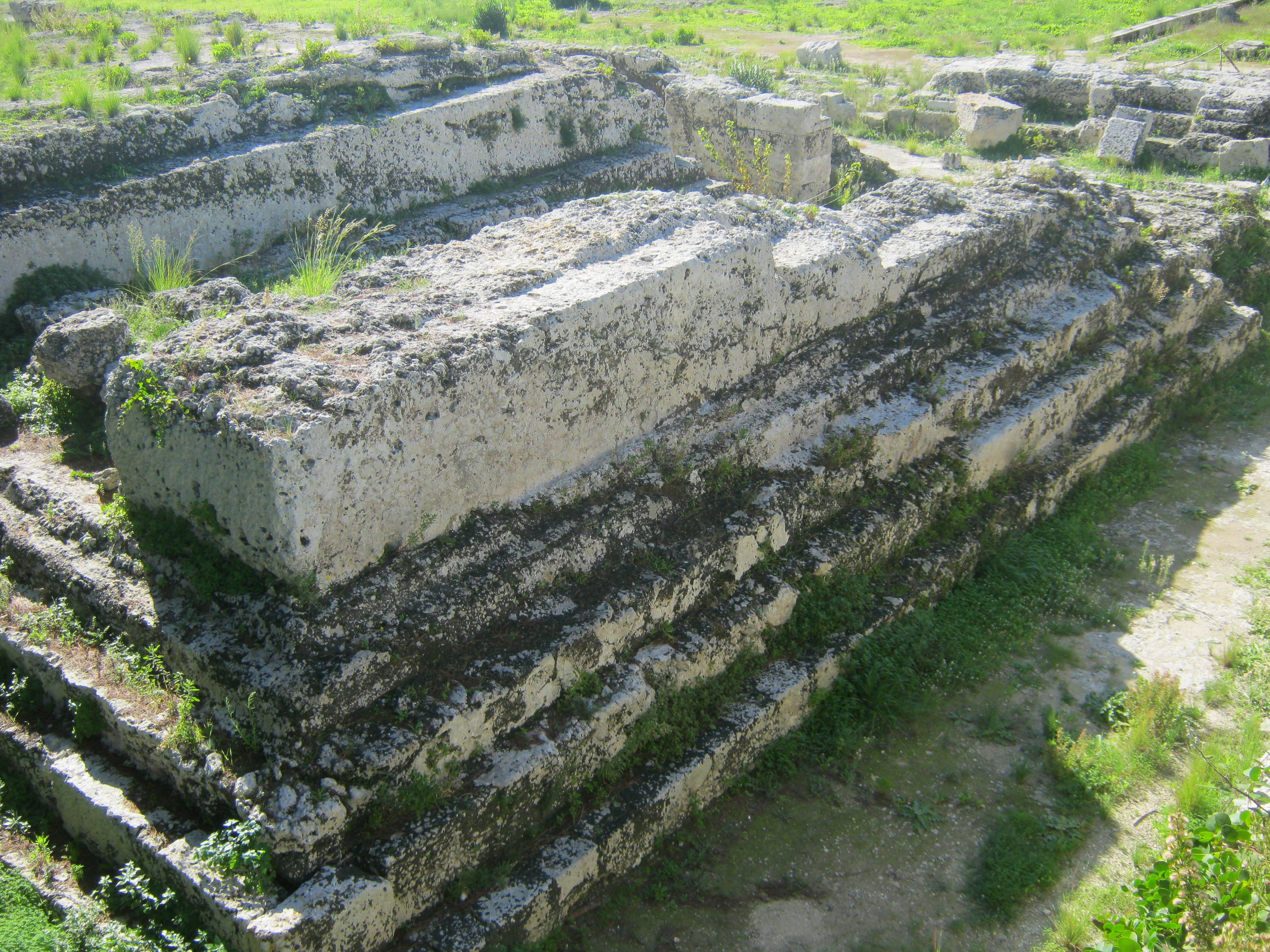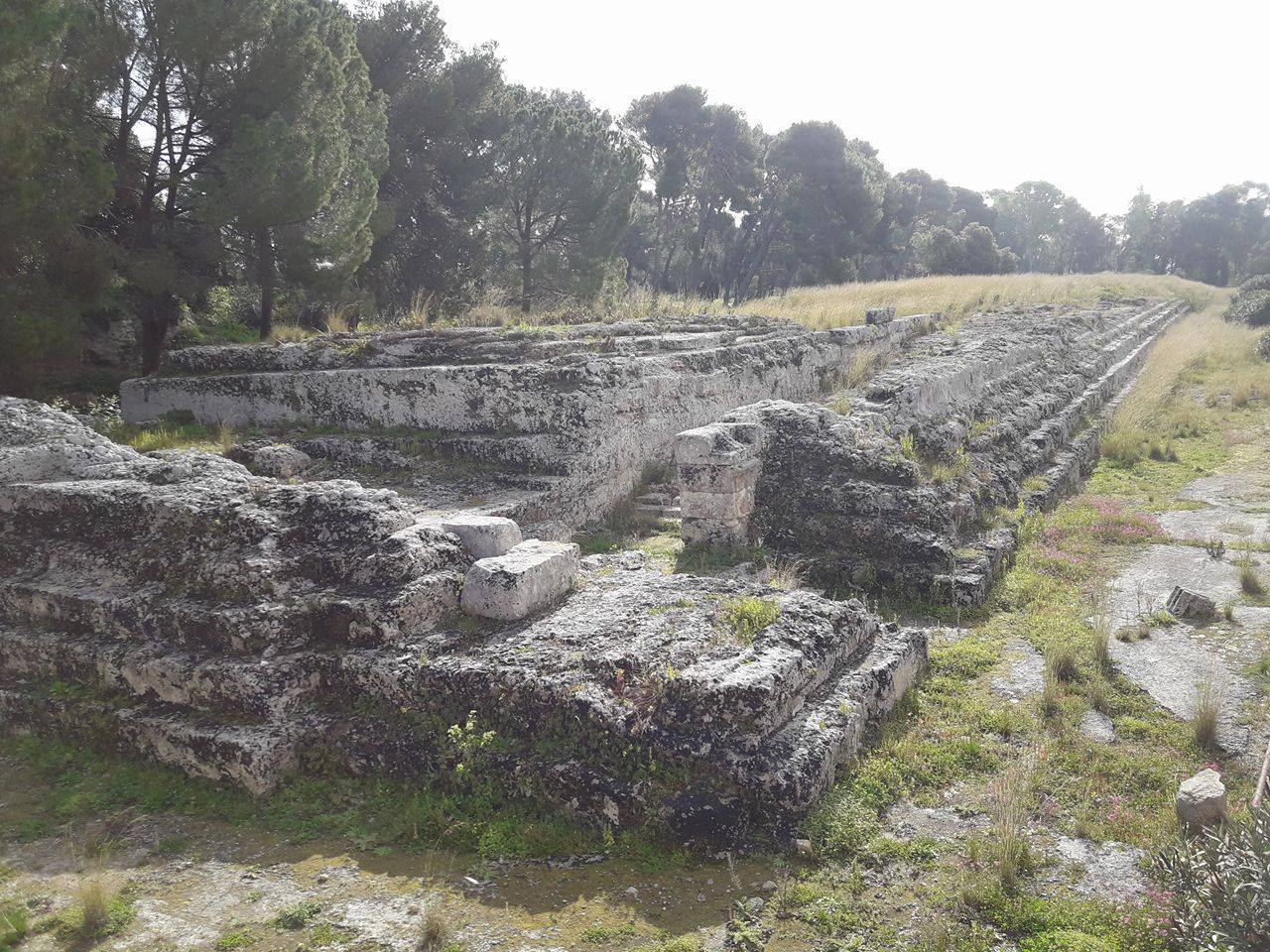The Altar of Ierone II°
II is a monument of impressive size and is the largest construction of its kind ever made to date, in fact, is a demonstration of how majestic and important Syracuse was considered the most prestigious city of Magna Graecia.
This Altar was built to commemorate the liberation of the tyrant Trasibulum of Siracusa, son of Dynomene, who was part of the dynasty of the Dynomenid Greek Tyrants of Sicily.
The Altar was built by the Greek Gerone II°
(tyrant of Syracuse from 270 BC to 215 BC) in honor of Zeus, who in the Greek religion was the king of all gods, god of heaven and thunder. Its construction dates back to the period between 240 BC and 215 BC.
It was also created to commemorate the liberation in 466 BC of the tyrant Trasibulus of Syracuse, son of Dynomene who was part of the Dynomenids (dynasty of Greek Tyrants in Sicily).
This was intended for public sacrifices on the feast of Jupiter Eleutherios (Jupiter the king of all the gods of Roman mythology, Eleutherios stands for liberator instead).
The space on which the Altar extended could accommodate the sacrifice of 100 oxen at the same time, we know, thanks to Diodoro Siculo
Sicilian historian (inhabitant of the Greek poleis of Sicily) that in history they were able to sacrifice even 450 in a single day.
What remains today is only the structural base obtained, also, as the Amphyteater Roman
from the rock of Temenite (rocky hill on which is based all the Archaeological Park of Neapolis.)
Measuring 198.40 x 22.28m in ancient times was provided with two main entrances on the shorter sides, which were accessed by oxen.
On the sides of the entrances there were two ramps where there were two telamons (sculpted male figures) of which today only the feet are preserved.
In Roman times, the area in front of the Altar had a large square in which there was a large porch, where, in the shortest part there were 14 columns while in the longest part there were 64, in the center, however, there was a kind of tank with a pedestal inside to house an immense statue, but in reality it is thought that it was used primarily to clean up the Altar after the sacrifices.

The monument in the upper part was equipped with blocks of stone, of which today we do not keep any trace, it was subject to plundering in the sixteenth century, wanted directly by the Emperor Charles V ° (First King of Spain, IV King of Naples and last “true sovereign” of the Holy Roman Empire) for the fortification of the city of Syracuse.
OPENING HOURS AND PRICES
Location: Viale Paradiso – Parco Archeologico della Neapolis
Contacts.: +39 0931 489511
Archaeological site without architectural barriers
First Sunday of each month free entry.
Entry ticket to the Archaeological Park: Adults € 10.00 – Reduced € 5.00 (under 18 years) – Free entrance up to the age of 12.
Combined ticket for the Archaeological Park + a museum of your choice between the Paolo Orsi Museum or the Palazzo Bellomo Gallery – Ticket price: € 13.50 – Reduced € 7.00 (under 18) – Free admission until the age of 12
Opening hours of the ticket office: from 8.30 am to 6.00 pm
PARK OPENING HOURS: from 8.30 a.m. to 6.30 p.m.
From May 10 to July 18 the schedule may vary, on the occasion of the tragedie greche that will be performed at the Greek theater.



